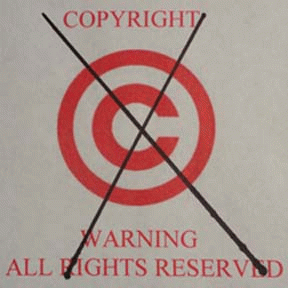I recently completed a book that includes photos of Medieval and
Renaissance artworks. Although the paintings are out of copyright and
in the public
According to a landmark 1999 federal district court ruling, The Bridgeman Art Library, Ltd., Plaintiff v. Corel Corporation, "exact reproductions of public domain artworks are not protected by copyright."
Despite this court decision, museums, other institutions, and even individual photographers still claim or imply that their "slavish" mere reproductions of photographic images of public domain artworks are copyrighted and that therefore they can demand fees for licensing and use.
The situation is confusing, especially for the growing numbers of self-published authors many of whom charge low prices for their e-books and soft cover books. To pay licensing fees -- many of which are sometimes exorbitant -- can be prohibitive, and may even result in authors deciding not to use images.
To gain further clarity on the use of photos of public domain
artworks I interviewed Professor Christopher Sprigman, who teaches
intellectual property law,
Starr: In a 2010 article in the New York Times you said, "If the painting is in the public domain, you can take a picture of it, you can reproduce it,..." How does that apply to photos of public domain artworks that appear online, on institutional websites, and in catalogues -- in the light of the Bridgeman-Corel court decision? The decision seems to state definitively that photos of public domain artworks that are purely copies of the artworks can't be copyrighted. Is this an accurate reading?
Sprigman: Yes. But keep in mind that there are a couple of limitations. The photos have to be flat, artless reproductions. The photos in Bridgeman vs. Corel were intended to illustrate the artwork and nothing more. Also, I'm talking about U.S. law. The laws in other countries may differ. And in my comments here, I'm giving some guidance about general U.S. legal principles, and not legal advice for any particular instance of use.
Starr: Before we continue, it would be useful to define "public domain."
Sprigman: For your purposes it's paintings or other artworks that have never been copyrighted or those for which the copyright has expired. The Mona Lisa is in the public domain because there never was a copyright on it in the first place. For a painting done in 1910, which was probably copyrighted at the time, the copyright has expired. In the U.S a copyright is good for seventy years after the death of the artist.
Starr: You say that the photos in the Bridgeman case were used solely to illustrate the artwork. That would seem to be the same for most reproductions that appear online or on museum websites and online catalogues; they are for the purpose of showing what paintings are in the collection. In fact, some of the images are not even that great.
Sprigman: I haven't seen these other photos. But the holding in Bridgeman applies to them if they are similar to such representations that we commonly refer to as "slavish" reproductions -- that is, if their purpose is simply to identify and display the paintings. Bridgeman was a federal district court decision and technically it would apply to that district. But the principles are valid, and I would expect it to be the governing law even outside the district where the case was decided. But you can't guarantee that.
Starr: Other commentators agree with you. In fact, there were several comments from attorneys after the Bridgeman-Corel ruling, including one from a former attorney for the Museum of Modern Art in NYC, who said that the Bridgeman decision was in line with U.S. copyright law.
Sprigman: Yes, of course. But the museums will try to get you to agree not to use photos that you take of public domain paintings; it's possible that they could condition entry to the museum on your agreement that on entry you accept an entry "wrap contract" in which you agree essentially not to take photos or to use them only for personal use but not for other purposes that they can specify.
Starr: But many museums allow patrons to take photos of artworks. I've asked museum guards if I can take non-flash photos and they have said yes. If someone takes photos of public domain works, and there is no wrap agreement, can they use them in an article or a book in discussing or citing those paintings?
Sprigman: In that case you would own the photo and then you're fine.
(Note: You can view every article as one long page if you sign up as an Advocate Member, or higher).






